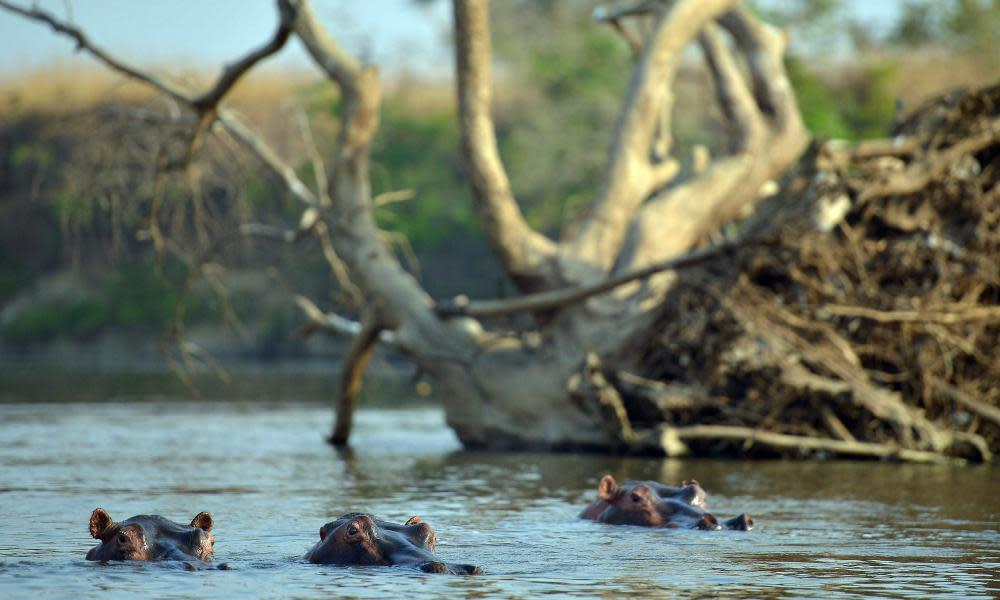Two wildlife rangers killed by poachers in DRC

Elephant poachers have killed two wildlife rangers in a shootout in Garamba National Park in the Democratic Republic of the Congo (DRC), reports African Parks, a not-for-profit conservation group that manages 10 protected areas across Africa in partnership with governments and local communities.
While out patrolling on 11 April, ranger Joël Meriko Ari and Sgt Gerome Bolimola Afokao of the DRC armed forces heard gunshots, African Parks reported. The patrol unit followed signs and tracks until they discovered a group of six poachers who were chopping up a freshly slaughtered elephant carcass.
A shootout followed, in which both Ari and Afokao were fatally shot. There were also casualties among the poachers, but details were not disclosed.
Ari, 27, leaves behind a wife and two sons, while Afokao leaves behind a wife and nine children.
African Parks said they had observed “significant poaching activity” during the days preceding the shooting. Aerial surveillance had identified the poachers’ camp, and they had recorded carcasses of nine elephants.
“IUCN deplores the deaths of rangers Joël Meriko Ari and Sgt Bolimola Afokao of the Armed Forces of the Democratic Republic of the Congo … and shares its most profound condolences with their families,” the International Union for Conservation of Nature said in a statement.
They’re not famous donors who give millions to conservation. They give their lives instead
Thomas Nicolon
Garamba National Park, located in north-eastern DRC, is one of Africa’s older national parks and a Unesco world heritage site. It is home to the last known wild population of the northern white rhinoceros, the rare Kordofan giraffes, and elephants – both forest elephants and savanna elephants as well as a hybrid of the two.
Once teeming with wildlife, Garamba is now a hotbed for armed poachers and guerrilla groups seeking ivory. In 2012, for example, poachers shot and killed 22 elephants, including babies, likely from a helicopter. In 2014, poachers killed 68 elephants in the park in just two months. The park is now estimated to have fewer than 2,000 elephants, down from 20,000 in the 1960s.
Garamba has also been plagued by violence against conservation workers. Last year, poachers shot five wildlife rangers in the park, killing three. In 2015, five rangers and three members of the Congolese armed forces are believed to have been killed by poachers in three incidents, according to African parks.
Thomas Nicolon, a wildlife photojournalist was on assignment for Mongabay in Garamba earlier this month.
“While in Garamba, I remember asking several park rangers if they were sometimes afraid while doing their job, knowing that armed poachers can be anywhere, anytime – and that many co-workers had been killed before.” Nicolon said the answer was always the same: “I’m not afraid. I have a weapon. If they open fire, I can defend myself.”
Nicolon also spent a week in Kahuzi-Biega National Park, where a ranger was killed by armed bandits less than 24 hours after he departed. He describes DRC rangers as “fearless, dedicated”. He added that when he asked about their pay, one ranger said: “The most important thing is to protect the animals of this park – money comes next.”
While working in Garamba, Nicolon was constantly under the protection of rangers. “It is with great sadness that I heard that two of them got killed a few days after I left the park,” he said. “Congolese park rangers do not earn big money. They’re not famous donors who give millions to conservation. They give their lives instead. They’re the unsung heroes of conservation.”
This article was first published at Mongabay, and is republished with their kind permission.

 Yahoo News
Yahoo News 
